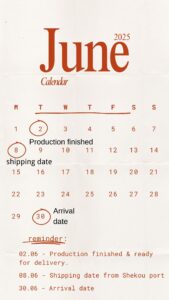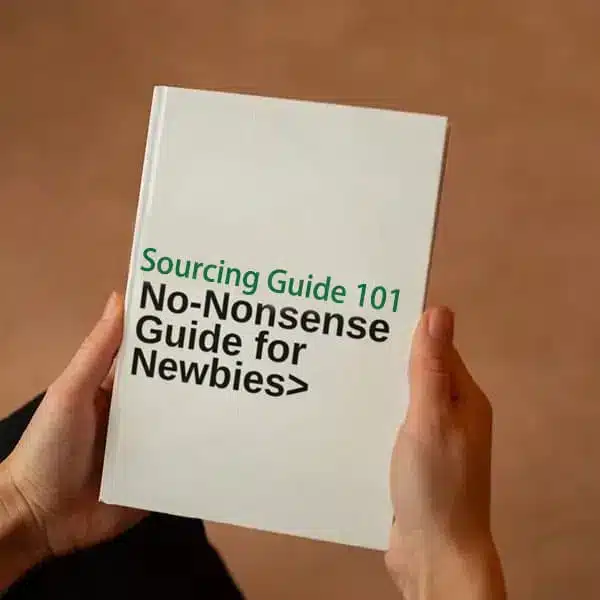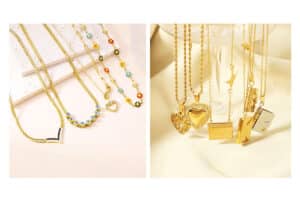You’ve navigated the supplier landscape, compared your options, and chosen the best partner for your product (Chapter 8). Now, before you transfer that deposit and kick off mass production, there’s one more vital step: making sure every single important detail is clearly agreed upon and written down.
Before paying your supplier’s deposit, use a pre-production checklist to confirm every order detail. This is your best protection against costly manufacturing errors.

Think of this as building the foundation for a smooth production run1. Taking the time now to confirm these six key points with your supplier2 can save you enormous headaches, potential disagreements, and even financial loss later. It’s all about ensuring you both have the exact same expectations for the order.
Let’s walk through the essential items you need to confirm before production begins.
Item 1 – The Proforma Invoice (PI): Your Official Order Agreement
Once you’ve decided to place an order, the very first document you should ask for (and receive) is the Proforma Invoice3, often called the PI. Think of it as the official sales contract for your specific order. While most Chinese suppliers don’t use lengthy Western-style contracts, the PI serves as the core document outlining the deal.
The Proforma Invoice (PI) is your master contract. Meticulously check every detail—product specs, pricing, and terms—before paying the deposit.

-
What It Is: A preliminary bill that details everything about your order before production starts. It’s what you’ll typically use to make the initial deposit payment.
-
What It MUST Include (Check This Carefully.):
-
Your Details & Supplier Details: Names, addresses, contact info.
-
Clear Product Description: Be specific. Include model numbers, materials (e.g., "100% Cotton T-shirt," "Stainless Steel 304 Tumbler"), colors (using Pantone codes is best), size, weight, and any other key specifications. Don’t leave room for assumptions.
-
Quantity: Exactly how many units you’re ordering.
-
Unit Price & Total Price: Price per item and the total order value, clearly stating the currency (usually USD).
-
Trade Term (Incoterm®): The agreed term (e.g., FOB Shanghai, EXW Dongguan, DDP Los Angeles – see Chapter 7).
-
Packaging Details: How will items be packed individually? How many per master carton? Any specific carton markings needed?
-
Estimated Lead Time: How long production will take after the deposit is received.
-
Payment Terms4: The agreed schedule for payment (e.g., "30% deposit via T/T, 70% balance before shipment" – more on this later.).
-
Supplier’s Bank Information: Correct details for sending payment.
-
PI Validity Date: Often, quotes are only valid for a certain period due to fluctuating material costs or exchange rates.
-
-
Check, Double-Check, Triple-Check. Before you pay anything, review every single line item on the PI. Does it match exactly what you agreed upon in your emails and discussions? If anything is unclear or missing, or incorrect, ask the supplier to revise it before you proceed.
-
PI vs. Commercial Invoice5 (CI): The PI is for confirming the order. Later, once the goods are produced and ready to ship, the supplier will issue a Commercial Invoice (CI). The CI is the final invoice used for export/import customs clearance and often reflects the final actual amounts. Sometimes, suppliers might slightly lower the value on the CI to try and save the buyer import duties – be cautious, as this is technically illegal and can cause customs issues if discovered. It’s best practice for the CI to accurately reflect the transaction.
Action Point: Get the PI, review it meticulously, and ensure it perfectly captures your agreement before sending any money.
Item 2 – Keeping Secrets Safe: The Non-Disclosure Agreement (NDA)
If you’ve developed a unique product design, have proprietary manufacturing processes, or are sharing sensitive business information, you might consider asking your supplier to sign a Non-Disclosure Agreement (NDA)6, sometimes called a confidentiality agreement.
Use a Non-Disclosure Agreement (NDA) to protect your intellectual property (IP), but understand its best used as a deterrent alongside choosing a trustworthy supplier.

-
What It Does: An NDA is a legal document where the supplier agrees not to share your confidential information (like designs, customer lists, technical specs) with third parties, and not to use your information for their own benefit (like selling your unique product to others).
-
Why Consider It? It provides a formal understanding about protecting your intellectual property (IP)7 and sensitive data. It can act as a deterrent against blatant copying or information leaks.
-
How Effective Is It? Be realistic. While most reputable suppliers will sign an NDA if asked, enforcing it legally in China can be complex and expensive for a foreign small business if a breach occurs. Some suppliers might also be hesitant if the terms are overly broad or carry huge penalties they deem unreasonable.
-
What it Doesn’t Prevent: If your product design itself isn’t legally protected (e.g., via a design patent8 in your target market), an NDA alone won’t stop another factory from reverse-engineering it once it’s publicly available.
-
Necessary Sharing: Understand that your primary supplier might need to share some information with trusted sub-suppliers (e.g., the packaging factory needs the box design, the component maker needs specs). A well-drafted NDA should allow for this necessary sharing while still binding those parties to confidentiality where possible.
-
Best Approach:
-
Choose Trustworthy Suppliers: Your best protection is often working with reputable suppliers who value long-term relationships (use Chapter 6 & 8.).
-
Use a Simple, Clear NDA: Have a basic, use a simple NDA in both English and Chinese ready that focuses on the key confidentiality points. Overly complex legal documents might scare off good suppliers.
-
Register Your IP: If your product has unique, protectable elements, the strongest protection comes from registering patents or trademarks in the countries where you plan to sell.
-
Don’t Rely Solely on the NDA: View it as one layer of protection, not an impenetrable shield.
-
Action Point: For unique products, use a simple NDA in both English and Chinese, but prioritize choosing a trustworthy supplier and protecting your IP through official registration.
Item 3 – On Time Delivery: Confirming Production & Shipping Times
Remember discussing lead times in Chapter 8? Now it’s time to lock it down in writing on the Proforma Invoice (PI). Vague promises aren’t good enough when deadlines matter.
Confirm the production lead time on the PI, but always calculate your total delivery time by adding shipping, customs, and a buffer for potential delays.

-
Confirm Production Lead Time9: This is the time from when the supplier receives your deposit until the goods are finished and ready for inspection. Ensure the PI clearly states this (e.g., "Lead Time: 25 working days after deposit receipt").
-
Factor in Delivery Time10: Production lead time is only part of the story. You also need to account for:
- Shipping Time: How long will transit take (e.g., sea freight: 30-45 days? Air freight: 5-10 days?)?
- Customs Clearance: Allow a few days to a week at both ends.
- Potential Delays: Build in a buffer. Things happen – port congestion, customs inspections, holidays (like Chinese New Year, when factories shut down for weeks.).
-
Why Clarity Matters:
-
Meeting Launch Dates/Seasons: If you need products for a specific event (like Christmas.) or a marketing launch, missing the deadline means lost sales.
-
Managing Expectations: Knowing the realistic timeline helps you manage your cash flow and inventory planning.
-
-
Get it in Writing: Don’t rely on verbal assurances. The agreed lead time should be clearly stated on the PI.
-
What About Penalties for Delays? For larger orders or time-critical projects, you can try to negotiate penalty clauses11 in the agreement for significant, unexcused delays. However, enforcing these can be difficult for small buyers, and many suppliers may resist them. Often, focusing on clear communication, regular updates, and choosing a reliable supplier is more practical than relying on penalty clauses.
Action Point: Confirm the production lead time clearly on the PI. Calculate your total estimated delivery timeline (including shipping and buffer) to ensure it meets your needs.
Item 4 – Quality Standards: Quality Requirements & Handling Defects
You expect good quality, but "good" can be subjective. It’s crucial to define your quality standards12 and agree beforehand on what happens if some products don’t meet those standards.
Before production, agree on clear quality standards and a specific plan for handling defects. This prevents disputes after the goods are made.

-
Define Your Quality Requirements: Be as specific as possible before production starts. What materials should be used? What are the critical dimensions? What functions must it perform? What cosmetic finish is acceptable? Use photos, approved samples (referencing the "golden sample"), and written specifications.
-
Agree on Acceptable Defect Rate: It’s unrealistic to expect 100.00% perfection, especially on large orders of lower-value items. Minor defects are often unavoidable. Discuss and agree on an acceptable percentage of defective units13 (sometimes related to AQL standards, but you can keep it simple).
- Example: For simple promotional keychains, maybe a 3-5% minor defect rate is acceptable. For higher-value electronic items, you’d demand a much lower rate, perhaps near 0% for critical functional defects.
-
Crucial: What Happens If Defects Exceed the Limit? This needs to be decided before you pay the deposit. Don’t wait until there’s a problem. Common solutions include:
-
Supplier Reworks/Replaces: The supplier fixes or remakes the defective units before shipment (ideal, but causes delays).
-
Supplier Offers Discount: They provide a discount on the defective items or the whole order.
-
You Hire Inspector for Sorting: A third-party inspector sorts the goods (often at the supplier’s cost if defects exceed the agreed limit), and you only pay for the good units.
-
Return/Refund (Difficult): Returning goods to China is often complex and expensive; usually avoided unless absolutely necessary.
-
-
Importance of Pre-Shipment Inspection: This is why arranging a pre-shipment inspection14 (either yourself, or hiring an agent/inspection company) is so valuable. It allows you to identify quality issues before you pay the final balance and before the goods leave China.
Action Point: Clearly define your quality standards. Agree on an acceptable defect level and, most importantly, agree in writing (ideally on the PI or a separate quality agreement) on the specific solution if quality issues exceed that level.
Item 5 – Payment Methods: How to Pay Your Supplier Safely
How will you actually send the money to your supplier? There are several common methods, each with pros and cons regarding cost, speed, and security.
For most new buyers, Wire Transfer (T/T) is standard for bulk orders, while PayPal or Alibaba Trade Assurance are good for samples and offer more buyer protection.

-
Wire Transfer (T/T – Telegraphic Transfer)15:
-
How: Direct bank-to-bank transfer. Most common for B2B.
-
Pros: Standard, reliable, relatively low fixed bank fees ($20-$50 per transfer), good for larger amounts.
-
Cons: Takes 1-5 business days, offers zero buyer protection once sent (money is hard to recall), requires careful checking of supplier bank details.
-
-
- How: Online payment platform.
- Pros: Fast (instant), offers good buyer protection, easy to use for small amounts.
- Cons: High fees (often 4-5%+), which suppliers may pass on to you or refuse to absorb for large orders. Suppliers might be hesitant due to ease of buyer chargebacks. Often unsuitable for sea freight orders due to tracking limitations for seller protection. Best for samples or small air-shipped orders.
-
- How: Alibaba’s escrow-like service if you place the order through their platform.
- Pros: Good buyer protection (Alibaba holds payment until shipment/delivery confirmed), dispute resolution process, supports various payment methods (credit card, T/T).
- Cons: Only works for orders placed on Alibaba, transaction fees apply (can vary), relies on Alibaba’s process.
-
Western Union:
- How: Money transfer service.
- Pros: Very fast transfer.
- Cons: Generally considered high-risk for buyers as there’s virtually no recourse if the supplier doesn’t ship. Fees can be high. Best avoided for significant order values unless you have extreme trust.
-
Letter of Credit (L/C):
-
How: A guarantee from your bank to the supplier’s bank ensuring payment once certain conditions (like shipping documents) are met.
-
Pros: Very secure for both buyer and seller.
-
Cons: Complex documentation, slow process, significant bank fees ($ hundreds). Usually only practical for very large orders (e.g., $50,000+).
-
Action Point: Discuss payment methods with your supplier. For most small/medium businesses starting out, Wire Transfer (T/T) for bulk orders and perhaps PayPal or Alibaba Trade Assurance for samples or smaller initial orders are the most common and practical choices. Always double-check bank details before sending a T/T.
Item 6 – Payment Terms: Agreeing on When You Pay
Equally important as how you pay is when you pay. This is defined by the Payment Terms. Getting favorable terms helps your cash flow, but suppliers also need security.
For new buyers, a 30% deposit and 70% balance is the standard payment term. Negotiating better terms is possible once you build a trusted relationship.

-
Common Payment Terms for New Buyers:
-
1. 30% Deposit / 70% Balance Before Shipment18: This is the most standard term, especially for new relationships.
-
You pay: 30% upfront via T/T so the supplier can buy materials and start production.
-
You pay: The remaining 70% after production is finished (ideally after you approve the pre-shipment inspection report) but before the goods are shipped.
-
Risk: Supplier has security. You have risk paying the balance before shipment, which is why inspection is critical.
-
- 2. 30% Deposit / 70% Balance Against Copy of Bill of Lading (B/L):
- You pay: 30% deposit upfront.
- You pay: The remaining 70% after the goods have shipped and the supplier provides a copy of the Bill of Lading (proof of shipment).
- Risk: Better for the buyer, as you confirm shipment before final payment. Supplier takes a small risk. This is becoming a more common and fair term when both parties are trading under the serious & legal conditions.
-
-
Terms Possible with Established Relationships/Larger Orders:
-
3. 50% Deposit / 50% Balance: Similar structure, just different percentages.
-
4. 100% Balance Against B/L Copy (or even after arrival): Possible after building significant trust over multiple successful orders. Supplier takes more risk.
-
5. O/A (Open Account)19: You pay 15, 30, or 60 days after receiving the goods. Very rare for small/new buyers. Usually reserved for large, reputable companies with long trading histories. Suppliers often use credit insurance (like Sinosure in China) to cover their risk.
-
-
Negotiating: As a new buyer, expect to start with 30/70 terms. As you build a relationship and place larger/repeat orders, you might be able to negotiate slightly better terms (like balance against B/L copy).
Action Point: Confirm the exact payment terms on the Proforma Invoice. Understand when each payment is due. For new buyers, 30% deposit / 70% balance (either before shipment or against B/L copy) is typical.
Conclusion
Making it official. Before you send that first payment, confirming these six key points – Proforma Invoice details, NDA (if needed), Lead/Delivery Time, Quality/Defect Plan, Payment Method, and Payment Terms – is absolutely essential.
Getting everything clearly documented, primarily on the Proforma Invoice, creates a shared understanding and protects both you and the supplier. It minimizes the chances of costly confusion or disputes later on. Taking these steps builds a solid, professional foundation for your production run and a successful importing journey.
-
Exploring this topic can provide insights into best practices for maintaining efficiency and quality during production. ↩
-
Understanding these key points can help ensure a smooth production process and avoid costly mistakes later on. ↩
-
Understanding the Proforma Invoice is crucial for ensuring clarity in your transactions and avoiding costly mistakes. Explore this resource to learn more. ↩
-
Familiarizing yourself with payment terms can protect your interests and ensure smooth transactions. Discover more about this topic here. ↩
-
Knowing the distinction between these invoices can help you navigate international shipping and customs more effectively. Check this out for detailed insights. ↩
-
Understanding NDAs is crucial for protecting your business secrets. Explore this resource to learn more about their importance and usage. ↩
-
Intellectual property is vital for safeguarding your innovations. This link will provide insights into its significance and protection methods. ↩
-
A design patent can offer strong protection for your unique designs. Discover how it works and its benefits for your business. ↩
-
Understanding Production Lead Time is crucial for timely deliveries and meeting deadlines. Explore this link to learn more about its significance. ↩
-
Calculating Delivery Time accurately ensures you meet your launch dates and manage expectations effectively. Check this resource for detailed insights. ↩
-
Learn about penalty clauses to understand how they can protect you from delays in supply agreements. This knowledge can be vital for negotiations. ↩
-
Defining clear quality standards is essential for successful production and helps prevent misunderstandings with suppliers. ↩
-
Understanding acceptable defect rates helps set realistic quality expectations and avoid disputes later on. ↩
-
Pre-shipment inspections are crucial for identifying quality issues before final payment, ensuring you receive the expected product quality. ↩
-
Explore this link to understand the benefits and risks of wire transfers, helping you make informed payment decisions. ↩
-
Discover the ins and outs of using PayPal for payments, including fees and buyer protection, to optimize your transactions. ↩
-
Learn about Alibaba Trade Assurance to ensure secure transactions and buyer protection when sourcing products online. ↩
-
This payment structure is common in new buyer-supplier relationships. Learn more about its implications and benefits. ↩
-
Open Account terms are rare and signify trust. Discover how they function and their advantages for established buyers. ↩





